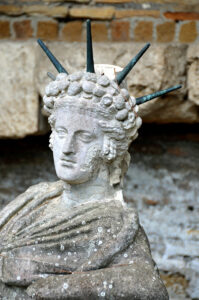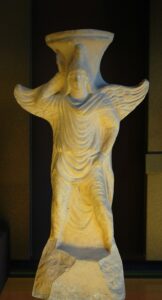

Attis is a deity from ancient Phrygian mythology, later incorporated into Greek and Roman religious practices. His mythology is closely linked with the worship of Cybele, the Phrygian mother goddess. The myth of Attis involves themes of love, death, rebirth, and castration, reflecting the cycles of nature and agriculture.
Key Elements of Attis’ Mythology:
- Origins and Birth:
- Attis is often described as having been born from either a miraculous virgin birth or from an almond or pomegranate tree, which was linked to the goddess Cybele.
- Relationship with Cybele:
- Attis was both a consort and a priest of Cybele. Cybele fell in love with Attis, drawn by his beauty and youth. However, their relationship was tumultuous and marked by intense emotions.
- Madness and Death:
- The most famous aspect of Attis’ myth involves his madness, induced by Cybele in a jealous rage after Attis pledged his love to another or attempted to marry a mortal woman. Overcome by frenzy, Attis castrated himself under a pine tree, leading to his death.
- Resurrection:
- Attis’ death and resurrection symbolize the seasonal cycle of vegetation, dying in winter and rebirthing in spring. This aspect made him a god of vegetation and rebirth.
- Cult and Worship:
- The cult of Attis, particularly in connection with Cybele, was characterized by ecstatic rites and rituals, including music, dancing, and self-mutilation by priests known as Galli. The annual festival celebrating Attis’ resurrection, the Hilaria, involved mourning followed by jubilation over his rebirth.
- Influence and Spread:
- Initially a local deity of Phrygia, the worship of Attis spread throughout the Greco-Roman world, particularly after the official adoption of the Cybele cult by Rome in the 3rd century BCE.
Attis’ story reflects broader themes of life, death, and renewal, which were common in many ancient religions and resonate with the natural world’s seasonal patterns. His worship declined with the rise of Christianity, which adopted similar themes of death and resurrection in the story of Jesus Christ.
